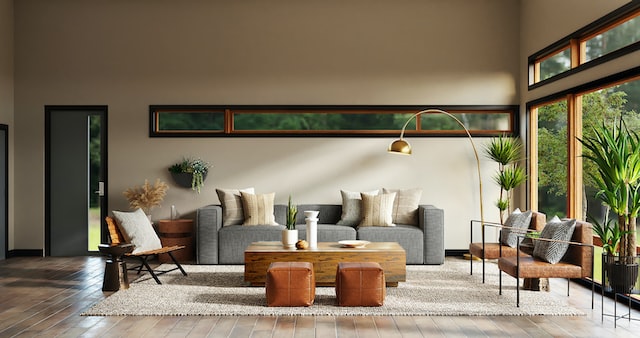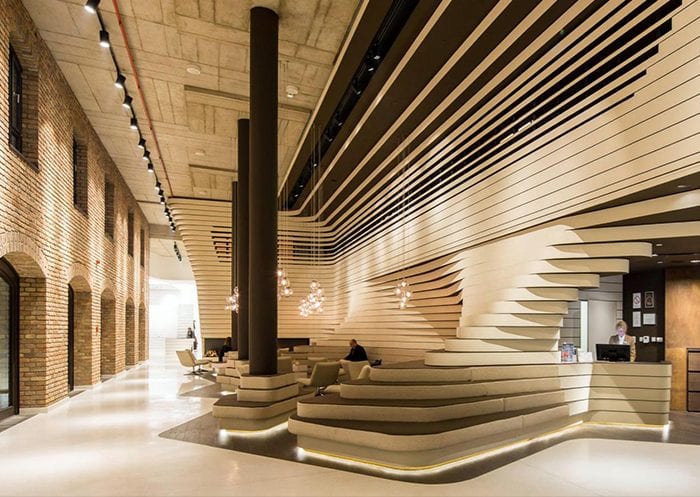The Art of Balance: Just How Interior Design and Home Architect Collaborate for Stunning Results
In the world of home layout, striking an equilibrium in between visual appeals and functionality is no small feat. This delicate equilibrium is achieved via the unified cooperation between indoor developers and designers, each bringing their special experience to the table. Keep with us as we discover the complexities of this collective process and its transformative impact on home layout.
Comprehending the Core Distinctions In Between Interior Layout and Home Style
While both Interior Design and home design play vital functions in creating cosmetically pleasing and useful rooms, they are inherently different techniques. Home design mainly focuses on the architectural elements of the home, such as building codes, safety and security policies, and the physical building and construction of the room. It takes care of the 'bones' of the structure, functioning with spatial measurements, load-bearing wall surfaces, and roof covering layouts. On the other hand, Interior Design is more concerned with boosting the visual and sensory experience within that structure. It involves picking and organizing furniture, selecting color pattern, and integrating attractive aspects. While they operate in tandem, their duties, obligations, and locations of proficiency deviate considerably in the production of an unified home atmosphere.
The Harmony Between Home Style and Interior Design
The harmony in between home architecture and Interior Design exists in a common vision of layout and the enhancement of useful aesthetic appeals. When these 2 areas align sympathetically, they can change a living space from common to phenomenal. This collaboration requires a deeper understanding of each self-control's principles and the ability to develop a natural, cosmetically pleasing environment.
Unifying Design Vision
Combining the vision for home design and Interior Design can develop a harmonious space that is both useful and cosmetically pleasing. The balance begins with an integrated attitude; engineers and indoor developers team up, each bringing their knowledge. This unison of ideas creates the design vision, a plan that overviews the task. This common vision is essential for uniformity throughout the home, ensuring a fluid shift from exterior architecture to interior rooms. It advertises a collaborating strategy where building elements enhance Interior Design elements and the other way around. The result is a cohesive living space that shows the property owner's taste, lifestyle, and personality. Hence, unifying the style vision is important in blending style and Interior Design for sensational results.
Enhancing Functional Looks
Exactly how does the harmony in between home architecture and interior design enhance practical looks? Designers lay the groundwork with their structural style, guaranteeing that the space is functional and effective. An architect might develop a house with high ceilings and big home windows.
Value of Collaboration in Creating Balanced Spaces
The cooperation between indoor designers and engineers is critical in developing balanced spaces. It brings harmony in between style and architecture, bring to life areas that are not just aesthetically pleasing yet also functional. Exploring effective joint strategies can offer understandings right into how this synergy can be properly achieved.
Harmonizing Design and Style
Balance, an important element of both interior design and style, can only absolutely be achieved when these 2 fields work in consistency. This collaborative procedure results in a natural, balanced layout where every component adds and has an objective to the general aesthetic. Integrating layout and architecture is not just concerning developing lovely areas, yet about crafting rooms that function seamlessly for their inhabitants.
Successful Collaborative Methods

Instance Studies: Effective Assimilation of Layout and Style
Taking a look at numerous situation research studies, it ends up being evident exactly how the successful combination of Interior Design and try this website architecture can change a space. find more information The Glass Residence in Connecticut, renowned for its minimalistic sophistication, is one such example. Engineer Philip Johnson and interior designer Mies van der Rohe collaborated to develop an unified equilibrium in between the structure and the interior, resulting in a smooth flow from the exterior landscape to the internal living quarters. One more exemplar is the Fallingwater Residence in Pennsylvania. Designer Frank Lloyd Wright and interior developer Edgar Kaufmann Jr.'s collaborative initiatives cause a strikingly distinct home that mixes with its natural surroundings. These instance studies underscore the extensive impact of a successful layout and style cooperation.

Overcoming Challenges in Design and Style Collaboration
Regardless of the indisputable advantages of a successful cooperation between interior style and design, it is not without its difficulties. Architects might focus on architectural stability and safety and security, while developers concentrate on convenience and style. Effective communication, mutual understanding, and concession are vital to get rid of these challenges and attain a harmonious and effective partnership.

Future Trends: The Advancing Connection In Between Home Architects and Interior Designers
As the globe of home design proceeds to progress, so does the connection between architects and interior developers. Alternatively, interior developers are welcoming technical facets, affecting general format and functionality. The future guarantees a more cohesive, ingenious, and flexible technique to home layout, as designers and designers continue to blur the lines, cultivating a partnership that absolutely personifies the art of equilibrium.
Final thought
The art of equilibrium in home style is achieved through the unified cooperation in between interior designers and architects. An Home Page understanding of each other's techniques, efficient interaction, and shared vision are essential in creating aesthetically spectacular, practical, and inviting areas. In spite of obstacles, this collaboration fosters development and development in layout. As the partnership between home engineers and interior designers evolves, it will certainly continue to form future fads, improving comfort, efficiency, and individual expression in our living rooms.
While both indoor design and home style play essential duties in creating cosmetically pleasing and functional rooms, they are naturally different techniques.The harmony in between home style and indoor design exists in a common vision of layout and the enhancement of functional appearances.Combining the vision for home style and indoor style can create an unified living area that is both useful and cosmetically pleasing. Therefore, unifying the style vision is vital in mixing style and indoor design for stunning outcomes.
Exactly how does the synergy in between home design and indoor design boost functional appearances? (Winchester architect)